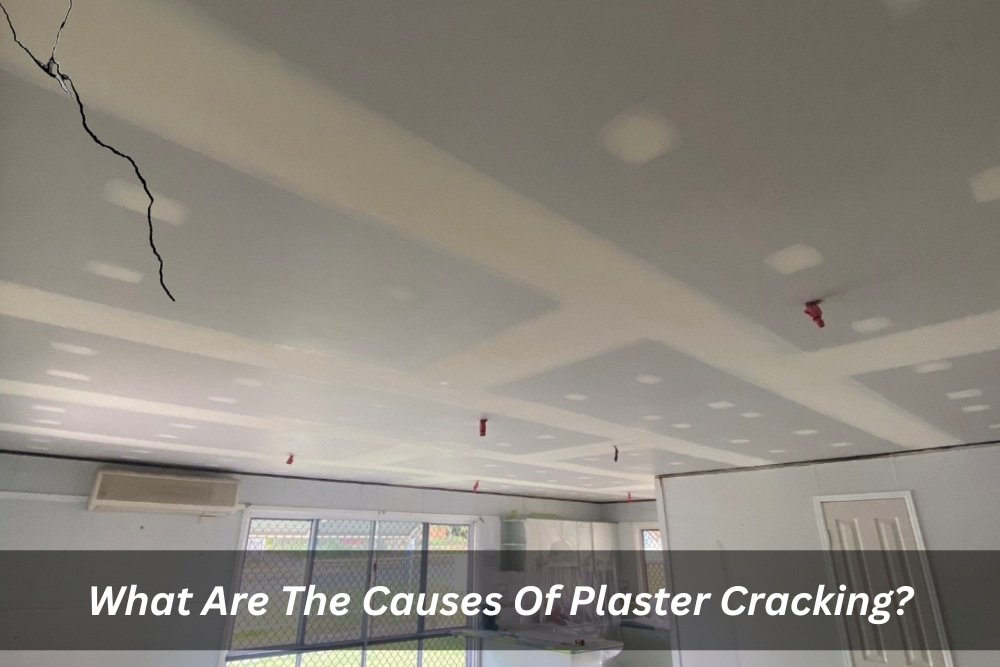Plaster is a versatile and widely-used building material, known for its durability and timeless charm. Whether it adorns the walls of an old Victorian home or a modern apartment, plaster has been a favourite choice for centuries. However, one common issue that plagues plaster surfaces is cracking. In this article, we’ll delve into the causes of plaster cracking, the different types of cracks, prevention methods, and tips for repairing those unsightly blemishes.
What is plaster cracking?
Before we dive into the causes, let’s first understand what plaster cracking is. Plaster cracking refers to the formation of fissures, gaps, or fractures in plaster surfaces. These cracks can vary in size, shape, and severity, making them an aesthetic and structural concern for homeowners and builders alike.
What are the different types of plaster cracks?
Understanding the various types of plaster cracks is crucial to pinpoint the root causes. Here are some common types of plaster cracks:
- Hairline cracks:
Hairline cracks are extremely thin and barely noticeable. They often result from minor structural movements or settling in a building. While they may not be a significant structural concern, they can be an eyesore.
- Settlement cracks:
Settlement cracks are typically vertical and appear due to a building’s foundation settling over time. These cracks can be more substantial than hairline cracks and may require attention to prevent further damage.
- Shrinkage cracks:
Shrinkage cracks occur during the drying process of the plaster. As the plaster dries and cures, it shrinks, causing small cracks to form. These cracks are common and typically not a cause for concern unless they are extensive.
- Expansion cracks:
Expansion cracks are the opposite of shrinkage cracks. They appear when plaster materials expand due to temperature and moisture changes. These cracks can be a result of poor material choices or improper application.
- Structural cracks:
Structural cracks are the most serious and worrisome type. They can appear horizontally or diagonally and often indicate a more significant underlying problem, such as a compromised foundation or excessive structural stress.
What typically leads to cracks in plaster?
Several factors can contribute to plaster cracking. Identifying the underlying causes is essential to address the issue effectively. Here are some common reasons:
- Poor workmanship:
One of the leading causes of plaster cracking is subpar workmanship during the installation process. When plaster is not mixed or applied correctly, it can lead to premature cracking. Hiring skilled professionals is crucial to avoid this issue.
- Insufficient curing time:
Proper curing is essential for the plaster to set and harden correctly. Rushing through the curing process or exposing the plaster to harsh conditions before it’s fully cured can result in cracks.
- Temperature and moisture fluctuations:
Plaster is sensitive to changes in temperature and moisture levels. Extreme temperature variations and high humidity can cause plaster to expand and contract, leading to expansion and shrinkage cracks.
- Settlement and structural issues:
Cracks can also be a result of underlying structural problems. If the building’s foundation settles unevenly or if there’s excessive structural stress, it can manifest as cracks in the plaster.
- Low-quality materials:
Using substandard plaster materials can increase the likelihood of cracking. High-quality materials are essential for a durable and long-lasting plaster finish.
- Lack of proper preparation:
Adequate preparation of the surface before plaster application is vital. Failing to remove old plaster or properly clean and prime the surface can lead to adhesion issues and eventual cracking.
How can you prevent plaster cracking?
Preventing plaster cracking is possible with the right approach and care. Here are some tips to help you maintain a crack-free plaster finish:
- Choose the right plaster:
Selecting the appropriate type of plaster for your specific application is crucial. Consult with a professional to determine the best plaster for your needs.
- Hire skilled professionals:
Invest in experienced and qualified plastering contractors who have a proven track record of delivering high-quality work. Proper application and craftsmanship are key to preventing cracks.
- Ensure proper curing:
Allow the plaster to cure thoroughly before exposing it to normal living conditions. Follow the manufacturer’s recommendations for curing time.
- Address structural issues:
If you suspect structural problems, such as foundation settling or excessive stress, consult with a structural engineer to address the root cause of the issue.
- Maintain consistent humidity and temperature:
Try to maintain a stable indoor environment with controlled humidity and temperature levels. This will help minimise the expansion and contraction of the plaster.
- Surface preparation:
Thoroughly prepare the surface before applying plaster. Remove old plaster, clean the substrate, and use appropriate primers to ensure good adhesion.
How do you repair plaster cracking?
In case you’re already dealing with plaster cracking, there are solutions to restore the beauty and integrity of your walls. The method you choose depends on the severity and type of cracks. Here are some common repair techniques:
- Patching small cracks:
For hairline cracks or minor settlement cracks, you can use a patching compound. Clean the crack, apply the compound, and smooth it with a putty knife. Sand it down for a seamless finish, and then repaint the area.
- Tape and joint compound:
For more extensive cracks, consider using self-adhesive mesh tape and joint compound. Apply the tape over the crack and then cover it with a joint compound. Sand the area, and once it’s smooth, repaint it.
- Plaster patching:
For larger cracks, especially those in the plaster itself, you may need to patch them with a new layer of plaster. Ensure proper surface preparation and mix the plaster according to the manufacturer’s instructions. Apply it, let it cure, and then finish with sanding and painting.
- Structural repairs:
If you notice horizontal or diagonal cracks that could indicate serious structural issues, consult a structural engineer or contractor immediately. Repairing structural cracks requires addressing the root cause of the problem, which may involve extensive work.
Who is capable of repairing the cracks in your plaster?
When it comes to repairing plaster cracks, you have several options depending on the severity of the issue. Here are the professionals who can help:
- Plastering contractors:
Experienced plastering contractors are your go-to experts for all types of plaster repair. They have the skills and knowledge to patch small cracks and restore the surface to its former glory.
- Painters:
Professional painters can often handle minor plaster repairs as part of their services. They can patch and repaint damaged areas, leaving your walls looking fresh and crack-free.
- Structural engineers and contractors:
For structural cracks or serious issues related to the building’s foundation, it’s essential to consult with structural engineers and contractors. They can assess the problem and recommend and execute the necessary repairs.
In summary, understanding the causes of plaster cracking and taking steps to prevent it is essential for maintaining the beauty and integrity of your walls. Proper material selection, workmanship, and maintenance can go a long way in ensuring a crack-free plaster finish. If cracks do appear, don’t despair – there are solutions available to restore your plaster to its former glory, whether it’s patching, taping, or even structural repairs. By addressing the issue promptly and correctly, you can enjoy the timeless elegance of plaster for years to come.
If you’re experiencing any issues with plaster cracking in your residential or commercial space, don’t let it dampen the appeal of your walls. Djari Group is here to help. Our team of experienced plastering contractors and professionals can provide expert assessment, efficient repairs, and reliable solutions to restore the beauty and structural integrity of your plaster surfaces. With a commitment to quality craftsmanship and a keen eye for detail, we ensure that your plaster surfaces remain crack-free and visually stunning for years to come. Contact Djari Group today to experience the difference in our services and let us help you transform your space into a flawless masterpiece.



